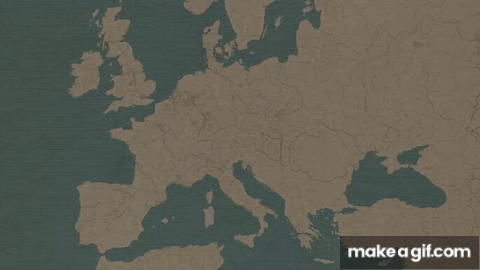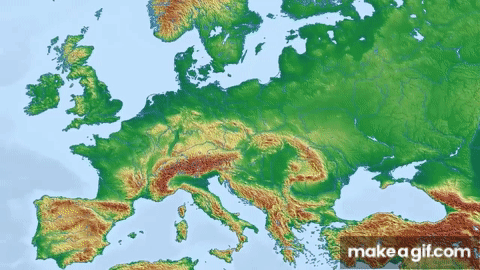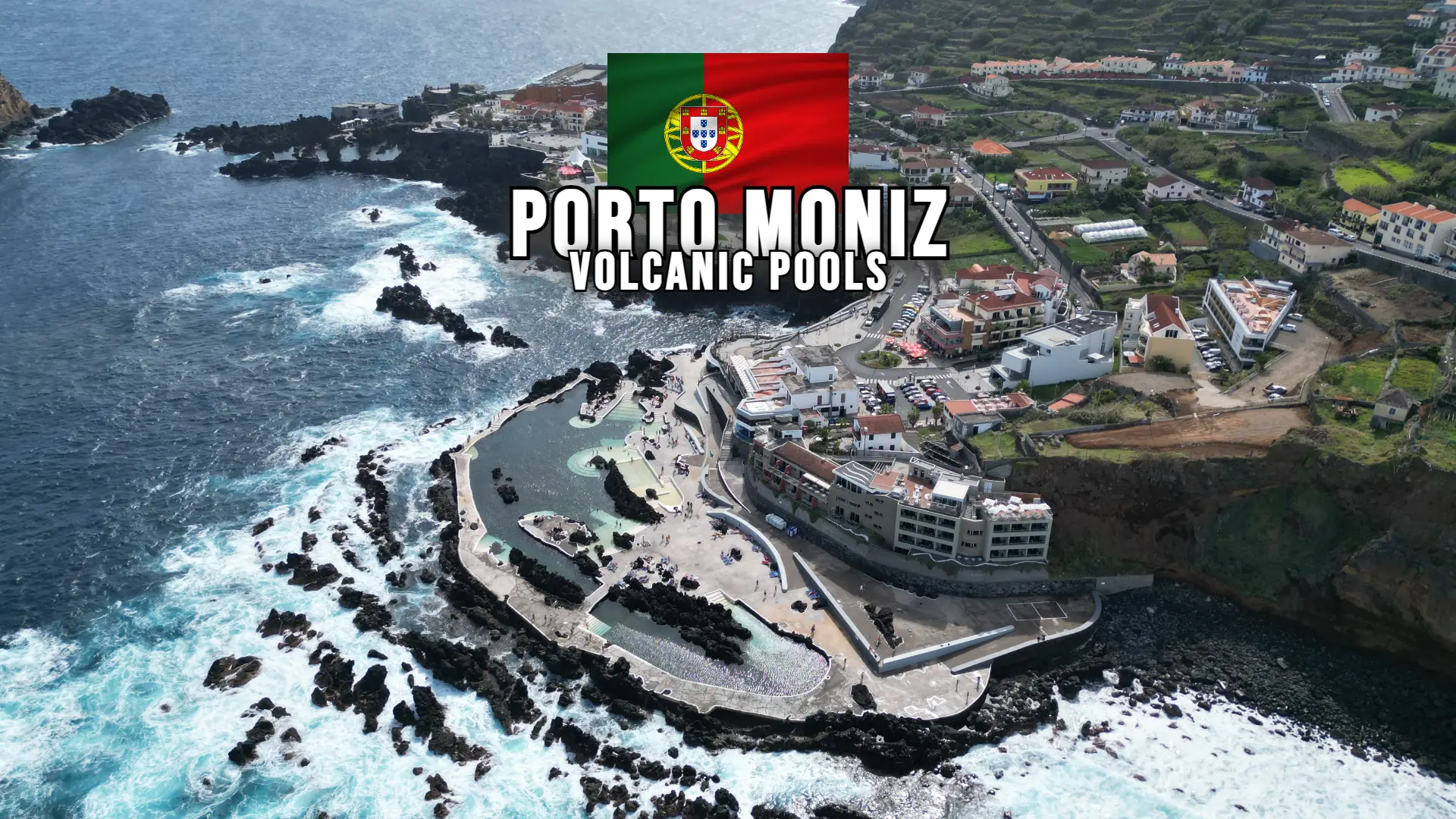Germany geographically is one of the luckiest countries in all of Europe, and to understand this, let’s first expand the map a little.
This is the whole of Europe, and the further south you go, the poorer the countries get. You only have to look at the GDP per capita map of each European country. We see that the further north you go, the greater the wealth of those nations, and that’s the first factor that made Germany so rich economically.
What is Germany’s border with other countries like?
She is literally isolated from poverty, the least wealthy countries in Europe are at the extremes of her, in Spain and Portugal, then southern Europe, and finally eastern Europe. As you can see, Germany is a long way from all this.

But the factor that makes it even more important is its own territory. In the west Germany borders France, Luxembourg, Belgium, and the Netherlands. Here alone it accounts for more than 4 trillion Euros of all the wealth generated in Europe. To the south it is bordered by Switzerland, the richest country in Europe, and also by Austria. But one highlight, it is very close to Lichtenstein and especially to northern Italy, the richest and most developed region in that country.
The North Sea
To the East we have the poorest region, with the Czech Republic, but the westernmost part of it, that is, also the richest part of that nation, and it also borders Poland. But it is now that everything gets more interesting, North Germany, here we have an important region with the North Sea, where is the East of the United Kingdom, where we have its capital and most important city, London.
Right after that we have Norway, this is where the important city of Kristiansand, Berger and the richest city of the country, Oslo, its capital, is located. But Germany’s luck doesn’t stop there, it and Denmark are the only countries that have access to the North Sea and the Baltic Sea at the same time.
The Baltic Ocean region is the important point of attention as it gives Germany access to the Gulf of Finland and where we simply have Stockholm, Helsinki, Tallinn and St Petersburg in Russia, these are the most important cities in that whole sea and that for sure was one of the main factors that made Germany the power it is today.
The Human Development Index in Germany
The human development index of each German region corresponds very well to its territorial geography. The stronger the blue, the more developed the state is, as more southern states like Baden-Württemberg which directly borders Switzerland and the state of North Rhine-westphalia, which borders Belgium and the Netherlands, are extremely well developed and wealthy.
German Industry
In addition to states such as Hamburg, Berlin and Bremen that make up the richest of all Germany. The German economy, in turn, is based on 2 extremely well-developed sectors. The service sector that contributes seventy percent (70%) of the GDP and industry with twenty-nine percent (29%) of the GDP. A great highlight must be made to its gigantic industry which is on the list of the most developed in the world. We can compare the wealth generated in Germany annually with the wealth generated in the whole of Africa, with one highlight, twice over. Germany produces twice as much wealth as the whole of Africa every year, and all of this has to do with producing a lot and with a lot of added value, in little territory, so much so that German agriculture accounts for only one percent (1%) of the wealth generated in the country.
Germany’s Main Port: Port of Hamburg
All this export volume is largely exported by the ports that are located in the north of the country and once again, the German geography helps a lot in this regard, because the port of Hamburg for example, which is the most important port in Germany, is in the north-center of the country and not on the coast. This happens thanks to the Elbe River, which takes the waters of the North Sea to the city of Hamburg, leaving this city extremely favourable for development, since it is in the interior of the country.
Germany’s Second Most Important Port: Bremen
Thus it is more directly connected with Germany’s largest cities than if Hamburg were situated on the coast. The same goes for the second most important port, Bremen, the Weser River, which is a little smaller than the Elbe River, also flows into the North Sea, making the city of Bremen also inland and not on the coast.
How important is the River Rhine for Germany?
Another fluvial factor that influences the geography of Germany immensely is the Rhine River, the most important river in the whole of Europe. It begins near the lake of Zurich in Switzerland, follows the entire border between the two countries and enters Germany from the city of Basel, which lies between France, Germany and Switzerland. From there it continues all over West Germany, passing through important and rich cities, such as Karlsruhe, Mannheim, Frankfurt, Bonn, Cologne and Düsseldorf, entering finally the Netherlands.
This route is extremely important for Germany’s development, as it directly links extremely wealthy cities, enabling trade and the migration of products and people from precisely the richest countries in the whole of Europe. The Rhine passes through such important towns as the Swiss state of Zurich, Noord-Brabant, Gelderland and Zuid-Holland, three of the five richest states in the Netherlands.
The European Great Plain
Besides the Rhine, the Elbe River also connects Germany’s entire hinterland with its coast, linking it with important cities. In addition to their territorial fortune, the countries of northern Europe have an advantage in relation to the world, many of them have access to the great European plain, a region that stretches across Russia, Belarus, Poland, Germany and into several European countries.

It is an extremely fertile region, but unlike the other countries that make up the plain, the region of Germany and Denmark were even luckier, because here we have the Germanic plain, where we find only flat and undulating land. Unlike the rest of the plains in the other countries that make up the region, we also have some mountainous regions.
On this map, the darker green a region is, the flatter it is, and the giant plain is only found in Germany, Denmark, Belgium and the Netherlands. This gigantic network of rivers and plains are ideal for development. Even as a geographical matter of wild animals, mountainous regions are where the biggest predators of the animal kingdom in Europe are found, such as bears and wolves. It may seem like it makes no difference, but in a scenario that of lower technology during Germany’s development it certainly did.
What Influence does Winter have on Germany’s Development?
But because they are further north, the countries in these regions are very cold in winter and this causes their fertile fields to be altered by snow. It may seem bad at first, but because they are buried by snow, the fields accumulate a lot of organic matter during the winter, since many of them do not produce during this season, and when they thaw, what happens is that the fields become even more fertile.
Obviously agriculture is no longer so important for Europe, but for its development during its history it was an extremely important factor. So Germany literally had extreme luck in the formation of its territory. There is no country in the world with a more propitious territory for wealth than Germany. For all these factors, for having direct connections with the richest countries of all Europe and fluvial connections throughout its territory that Germany became one of the most important countries of the whole continent: Borders, Rivers and Industries.








